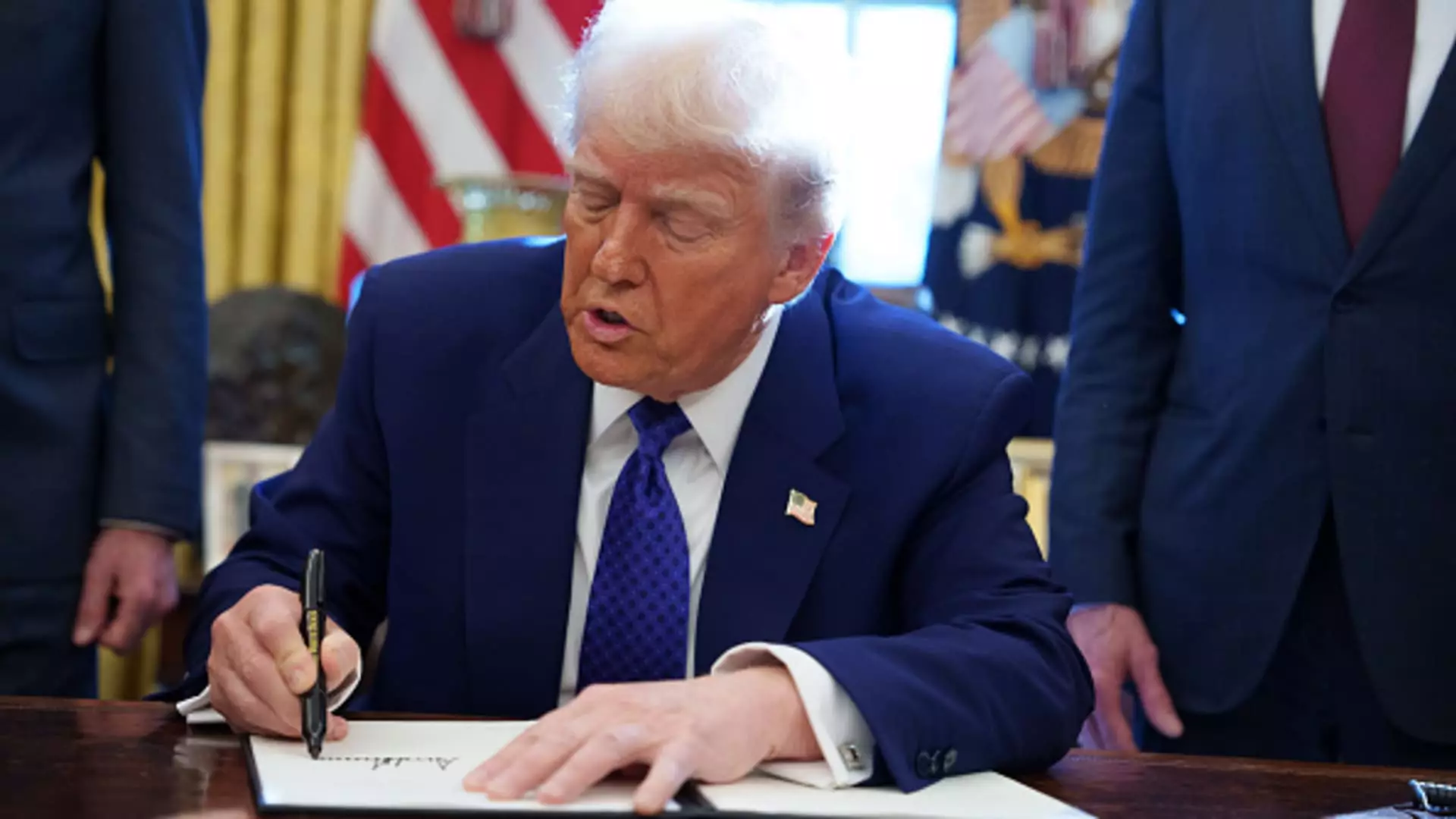The financial performance recently unveiled by Trump Media & Technology Group (TMTG) has sparked considerable scrutiny, not just for its numbers but for the strategic choices made by the company’s leadership. The release of their 2024 results has led to a mixed reaction from investors and market analysts alike. The quarterly revenue deceleration, alongside significant losses, raises important questions about TMTG’s operational viability and future strategy.
TMTG reported a staggering loss of $2.36 per share, a financial hit that has provocatively widened the company’s total net loss to $400.9 million, quite the leap from previous year losses of $58.2 million. A 12% year-over-year revenue decline is not just concerning; it raises alarms about the effectiveness of TMTG’s business model in an increasingly competitive social media space. While the political landscape surrounding Donald Trump may have initially catalyzed investor interest, the resulting financial figures suggest that the momentum may be faltering.
These figures highlight a critical aspect of financial management: the difference between surface-level popularity and underlying fiscal health. Despite former President Trump’s reconvening of his political following—demonstrated by the surge in stock value upon his successful 2024 presidential bid—this enthusiasm has not translated into sustainable commercial success for TMTG. The question remains: will the organization pivot its strategy to address its mounting losses?
Repercussions of Legal Hurdles and Business Decisions
The turbulence faced by TMTG cannot be overlooked, especially in light of the legal barriers imposed by Biden’s Securities and Exchange Commission. Such obstacles have reportedly resulted in soaring merger-related legal fees that could have otherwise been utilized for growth-focused initiatives. This challenge highlights an essential concern within the organization: navigating legal frameworks while simultaneously pursuing business objectives.
Furthermore, a change in the revenue-sharing agreement with an advertising partner has compounded TMTG’s difficulties. This scarcity of ad revenue aligns poorly with the company’s decision to seek a nascent advertising initiative on the Truth Social platform. While innovation can pave the way for improved revenue streams, the lack of traction in this venture begs the question of whether TMTG has a coherent strategy that balances innovation with revenue generation.
Management’s Unconventional Metrics
Interestingly, TMTG’s management has publicly distanced itself from conventional industry metrics, which raises a notable concern regarding accountability and transparency. By foregoing standard measures like active user counts and average revenue per user, TMTG seems to be signaling an aversion to traditional financial benchmarks—a potential misstep in an industry driven by data and performance indicators.
The rationale provided—that focusing on these metrics could obscure strategic evaluations—strikes as an attempt to redirect potential criticism rather than a sound operational strategy. In a marketplace dominated by tech giants who successfully use metrics to drive engagements and improve revenue streams, this exclusionary philosophy could hinder TMTG’s growth trajectory in the long run.
Despite a temporary rise in stock value correlating with a political victory, TMTG’s overall performance in stock is on a downturn, registering an 11% decline year-to-date. Currently holding a market capitalization of $6.59 billion, the company sits at a precarious crossroads. Amidst this financial turmoil, Trump Media has also announced the launch of its Truth+ video streaming service, which could serve as a potential growth channel if executed correctly.
While the company boasts $776.8 million in cash and cash equivalents, the current debt figures paint a concerning picture of liquidity. Such financial positioning necessitates a robust, coherent strategy for mergers and acquisitions to diversify and stabilize income channels.
Future Directions: A Matter of Strategic Fortitude
Chairman and CEO Devin Nunes highlighted the intention of TMTG to explore new partnerships and acquisitions. However, the effectiveness of this vision will depend significantly on the company’s ability to adapt to prevailing market conditions. As it seeks to transition into a holding company structure, the question looms: can TMTG develop an integrated business model that can navigate both legal landscapes and market expectations effectively?
As the company moves forward, the need for a redefined strategic framework is evident. In a fluctuating marketplace, TMTG must pivot not only to regain investor confidence but also to ensure its long-term sustainability. The financial implications of their choices hang heavy, and the company’s leadership would do well to address these challenges head-on, lest they fall victim to the very political mandate that once buoyed them.


Leave a Reply
You must be logged in to post a comment.